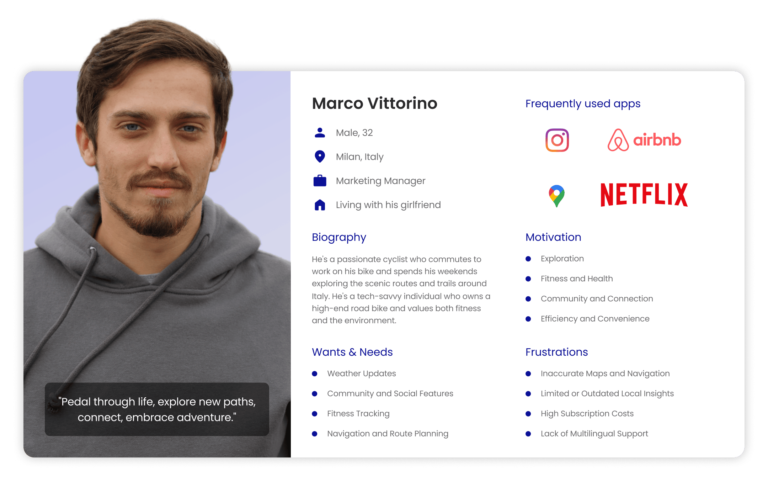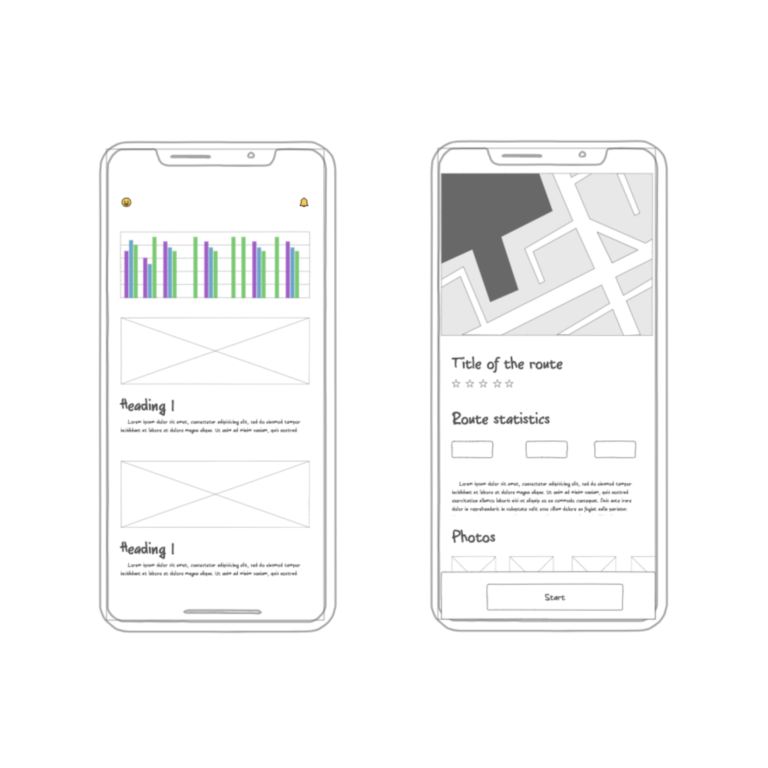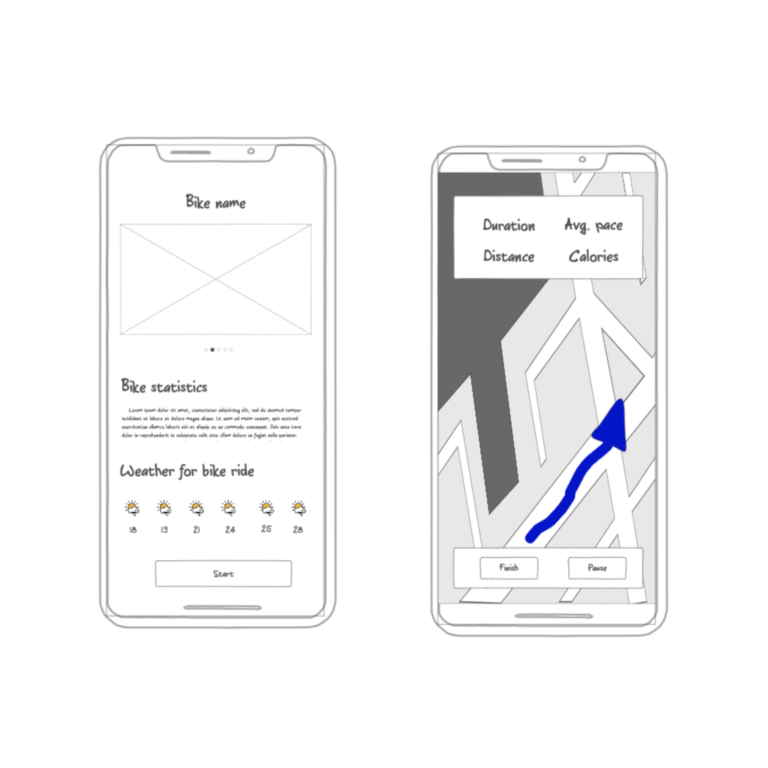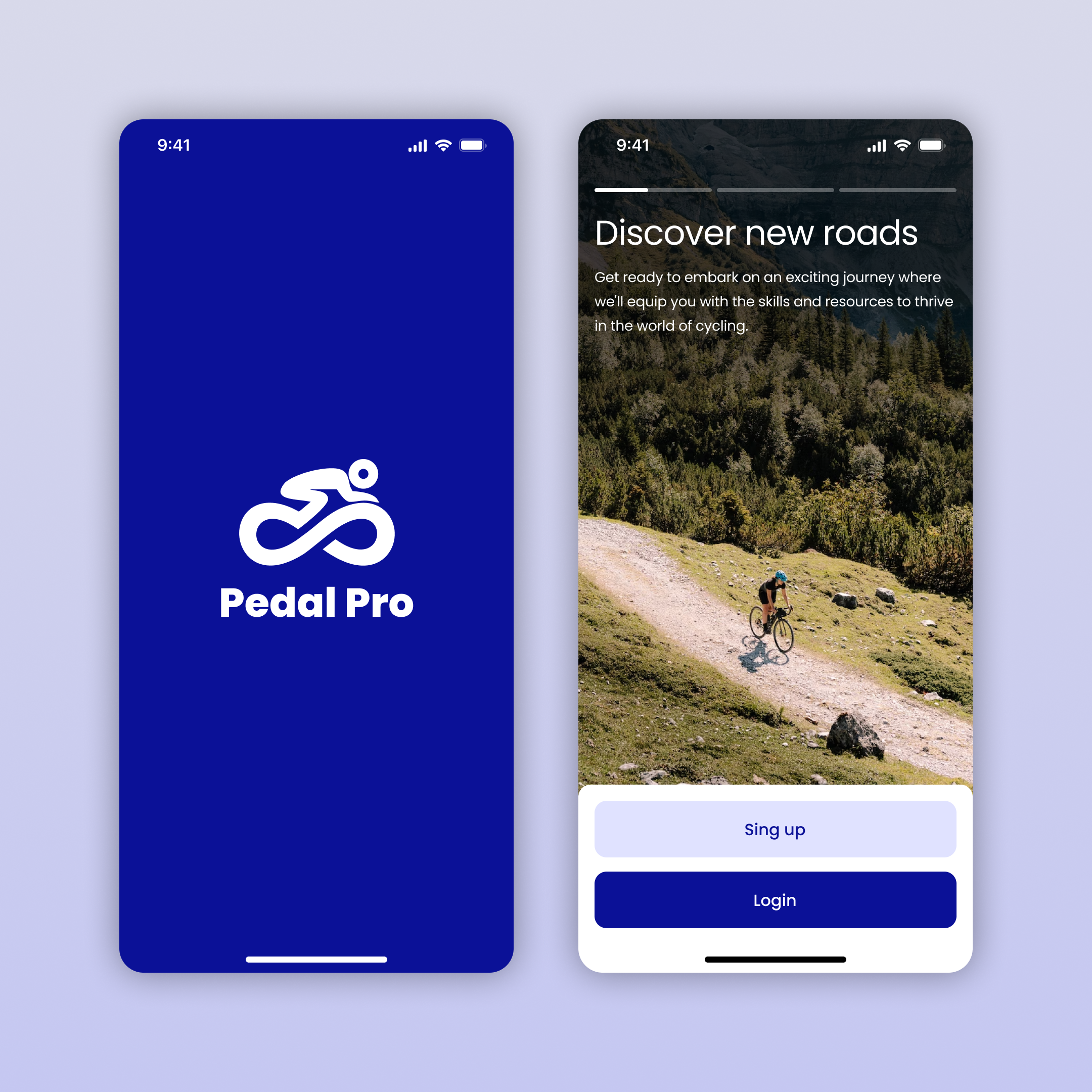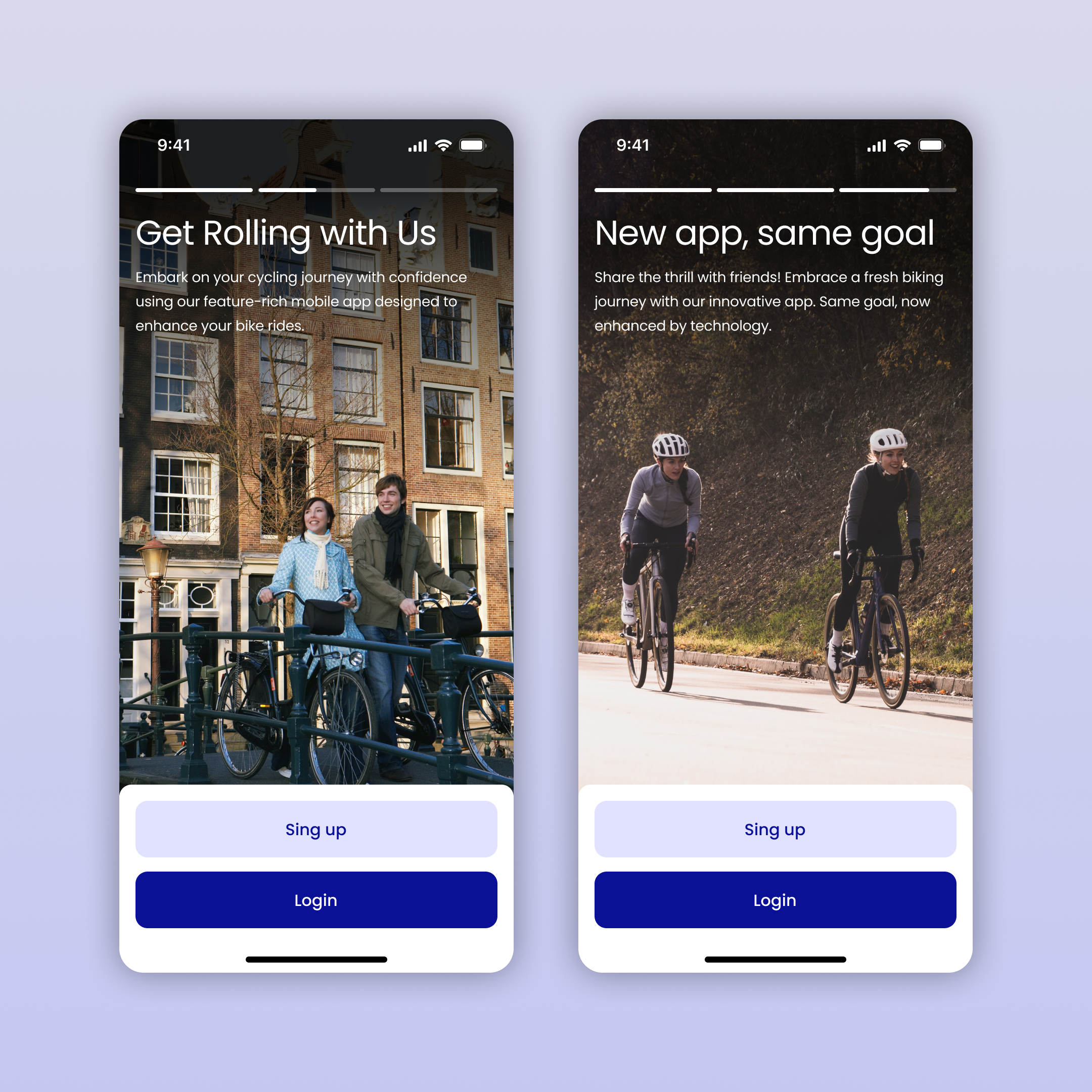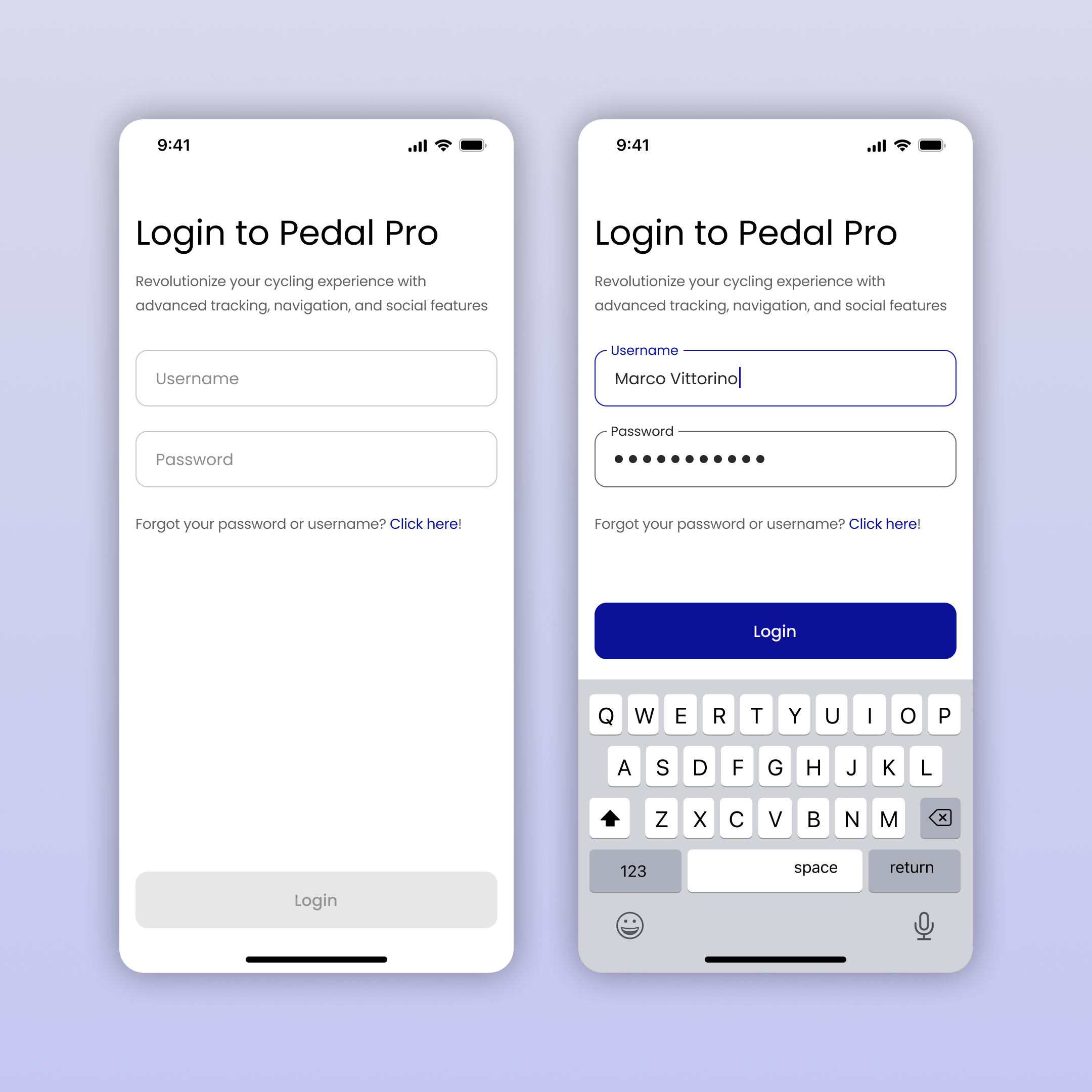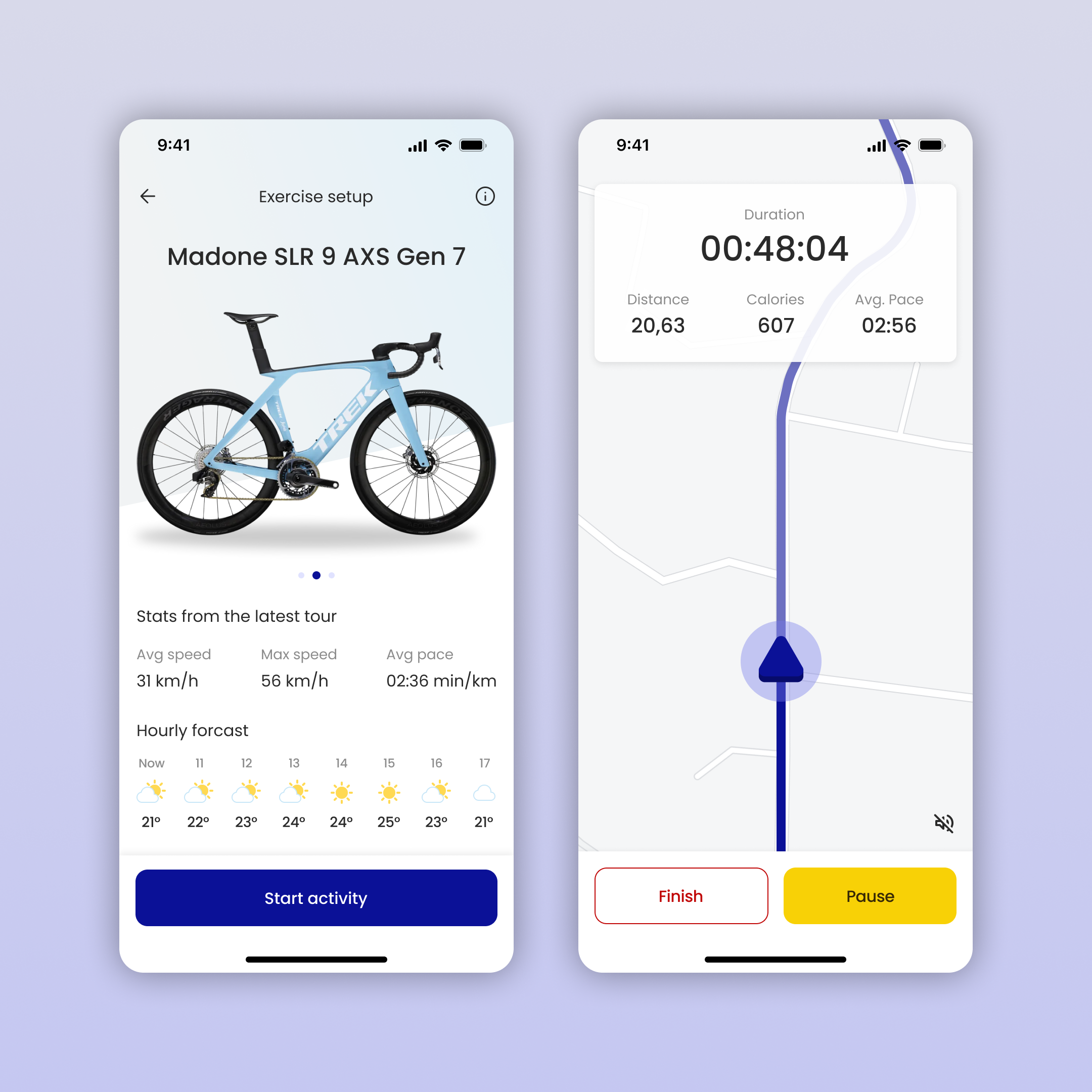Pedal pro
This dynamic mobile app combines intuitive design with advanced features to create an immersive cycling experience. From personalized route suggestions to real-time performance tracking, it’s the ultimate tool for cyclists seeking both convenience and innovation on their rides.
Client
Conceptual
type
Mobile Application
#mobile-application #ux/ui-design #cycling #user-flow #wireframing #bike-routes #map #statistics

User Persona
Creating user personas for the Pedal Pro mobile app was a crucial step in understanding and addressing the needs of targeted audience effectively. User personas are detailed representations of Pedal Pro’s potential users, and they help guide the development and marketing efforts.
By delving into the mindset of Pedal Pro users, I was able to better tailor Pedal Pro to meet their unique requirements and expectations, ensuring a more personalized and engaging cycling experience. These personas served as a compass throughout the app’s development journey, helping me make informed decisions about features, design, and communication strategies.
User Flow
The “Pedal Pro” user flow begins with personalized onboarding, where cyclists set up their profiles and preferences. From the home screen, users can access navigation, performance tracking, and route recommendations.
After rides, cyclists receive detailed summaries of their performance and can share achievements on social media. The app’s profile section allows users to review past rides, adjust settings, and provide feedback, ensuring a comprehensive and engaging cycling experience.
Wireframing
Wireframing for “Pedal Pro” involved crafting low-fidelity visual representations of the app’s key screens, mapping out user interactions and layout structures. These wireframes served as a strategic blueprint to align design and functionality, ensuring a user-centric experience that prioritizes efficient navigation and seamless interactions.
The wireframes formed the foundation for the app’s visual design and development phases, facilitating a cohesive and purpose-driven design process.

